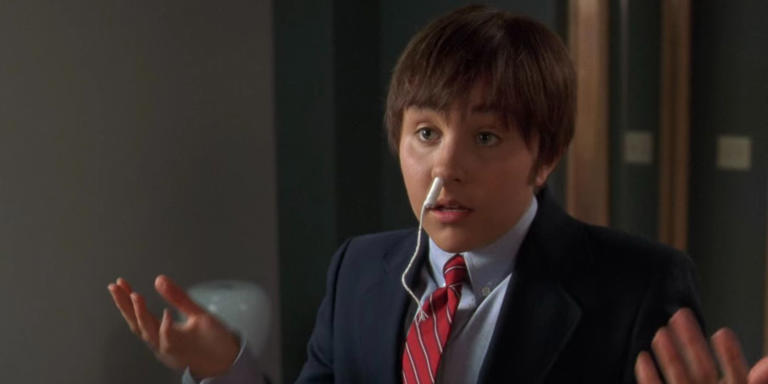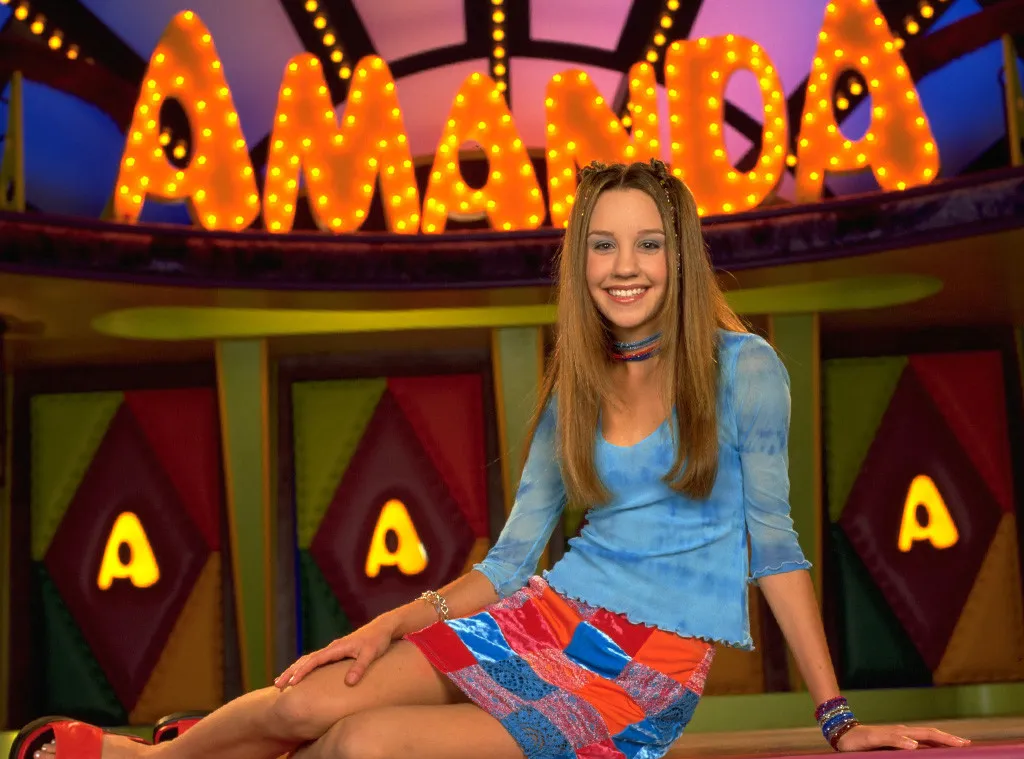My Problematic Fave: A juicy question with many answers: Catherine Breillat. Dollarama. Nina Simone's version of "I Loves You, Porgy" (it's not on Simone, she saves it from Gershwin, it's just the one I love). I would say Woody Allen's Husbands and Wives or Deconstructing Harry, but I think it's okay to enjoy those (so bleak and revealing, they are basically a confession), it's more problematic that I love Manhattan.
First Movie I went on a Date for: Sweet Home Alabama, a double date with my neighbourhood friend and two guys from another school we met hanging out (as teens do) after school hours at the playground. He thought I was crying during an emotional scene where Reese Witherspoon visits a grave in her hometown (A grandparent? Childhood dog?), but I was a cynical 14-year-old, and not then or now a Rom Com girl, and was trying to muffle my laughter.
My Movie/TV Character Style Icon: Julia Stiles in Hamlet, Kiera Knightley in Love, Actually, Satine in Moulin Rouge, Maggie Cheung and Nathalie Richard in Irma Vep.
The First Sex Scene I Ever Saw: I can't remember for sure, but probably Titanic.
… and it made me feel: Confused: it gave me absolutely no information on what sex actually is, only that there were certain signals I would one day understand (like the men who laugh knowingly when they see the fogged up windows). Also afraid: it seemed sex would always leave some trace, and you could not hide it from anyone. Also romantic: sex was fun and actually fine, no one was hurt by it or punished for it (although it did happen right before they hit the iceberg, but this was not a coincidence that my young mind internalized.)
Best Needle Drop: Most of the songs in Rushmore (but maybe "Oo La La" by The Faces the most). I didn't even know what those songs were when I watched it at 15, but I knew that they were perfect.
I Wish this Fictional Meal Existed IRL: This meal does exist, but I have never seen the timpano from Big Night out in the wild, and although it seems like something that is better in theory than in execution, I'm not sure I'll feel fully satisfied if I never try one.
Untouchable Classic that I hate: How do I even pick! Citizen Kane does very little for me (except Welles, who I find quite hot), 2001: A Space Odyssey is glacial and so British (I do think the scene approaching the monolith on the moon is fab), Bresson leaves me dry (a symptom, perhaps, of him casting actors because they're hot), I find Parasite shallow, I only like the scenes in Stalker before and after they go to the Zone, and I can't get past Jeanne Dielman's melodramatic ending (which became an irritating staple of art house film).
Celebrity I had on my wall as a teen
Frank Black Francis and Karen O.
My film/TV OTP is: I can't think of a time when I felt the ending of a film or show should have been different, I like when characters come together, I like when they fall apart.
The Reality TV Show I Would Win: I think it's obvious that my true place is not as a competitor, but as a judge.
Bynes’ brief career as a Hollywood actress consisted of just nine films, four in which she was the top-billed star: What a Girl Wants (2003), Love Wrecked (2005), She’s the Man (2006), and Sydney White (2007). This condensed filmography, released between 2003 and 2007, has been under-analyzed in the critical discourse, but presents us with a genuine comedic talent that tried to bridge two genres that rarely, if-ever, cross-pollinated: the teen girl movie (think 13 Going on 30 (2004), A Cinderella Story (2004)) and the star-driven wacky-guy studio comedy (think Ace Ventura: Pet Detective (1994), Austin Powers : International Man of Mystery (1997)). Bynes bravely asked the question, “what if I injected a milquetoast comedy aimed at tweens with the outré screen presence of a filmic clown?”
While there is a point where the teen girl protagonist and the wacky guy protagonist intersect—the I’m not like other girls trope, which often sees awkward, clumsy girls doing light physical comedy—Bynes took it to new extremes. Unlike other young starlets who starred in early-to-mid 2000s slumber party fodder—your Anne Hathaways, your Hilary Duffs—Bynes was a real-deal comedienne. She had been doing stand-up since she was nine years old, and had been on a nationally televised sketch comedy show from just about the same age. In a 2003 interview she did to promote What a Girl Wants, she namechecks Jim Carrey and Christopher Guest when asked about her films—truly, she was not like other girls.
"Bynes bravely asked the question, “what if I injected a milquetoast comedy aimed at tweens with the outré screen presence of a filmic clown?”"
What a Girl Wants is, by my estimation, the most successful Amanda Bynes star vehicle. In part because it has the most sense of what it is, smartly leaning more into the teen girl mode, keeping wacky guy antics mostly to light schtick. A competent piece of Princess Diaries-sploitation, Bynes plays a free-spirited 17-year-old who runs off to London to see the dad she's never met (Colin Firth, as an English noble running for office.) In this performance, Bynes is less like Jim Carrey and more like a pint-size Barbra Streisand or Carol Burnett. She’s doing a lot of baby’s first pratfalls—falling into water, tumbling off a runway, a well-executed scene where she and Firth butter their toast the same way to indicate hey, they really are related! Her antics fall solidly in the realm of quirky rather than outright wacky, which fits this mode of movie much better.
Bynes gets her first chance to anchor a movie mostly by herself with the Lance Bass executive-produced Love Wrecked. In it, she plays a teen girl working at a Caribbean resort who, by happenstance, ends up stranded on a deserted island with the rockstar idol she is obsessed with. Or so it seems: turns out they’re really on the same island as the resort, a fact Bynes conceals from her feathery-haired himbo paramour so she can Stockholm Syndrome him into falling in love with her.
I won’t spend much time on this movie, in part because it is a truly dire viewing experience, but also because Bynes doesn’t get to do as much as in her other films. However, it’s a key evolution point in her wacky guy filmography because it’s the first film in which she behaves in a way that would be completely abhorrent in society, but gets away with it.

Bynes wouldn’t have to wait long until she was fully unleashed. 2006’s She’s the Man is pure, uncut Bynes. She is in almost every frame from the word go, with her presence swallowing up everything that’s around her. Her performance as a cross-dressing teen soccer star impersonating her brother to play on his school’s elite team makes it clear that, at her core, Bynes is a sketch performer. She is talented at constructing extreme caricatures that, while tolerable in small doses, become grating over an extended period. And while actors have been able to make a career out of extending sketch personae for the big screen, they didn’t do so in teen soccer comedies.
Here, her chipmunk face paired with a dubious bowl cut wig and an endless wardrobe of fooler shirts create a full-bodied pantomime of young masculinity circa the mid-2000s. Complete with alarmingly frequent breaks into a blaccent—you really can’t understand the concept of cringe until you hear Bynes drawling the words “I’d tap that.” Ultimately, the comedy comes not from her character’s failure to act like a typical soccer bro, but her failure to act like a human being who has spoken to other human beings before. This is to say, she has gone full wacky guy, and she won’t look back.
"A Jerry Lewis in a She’s All That world."
I think She’s the Man retains something of a cult status largely because of the novelty of Bynes’ cuckoo performance, but watching it last year for the first time since I was maybe 11, I can tell you that the experience was confounding. While this movie was a hit, you can’t sustain a career mashing together vibes this disparate. The logical next step for Bynes was to leave the land of girly movies for something more bizarre and better-suited to her sensibilities. But she was still a cute teenage girl, whose fan base consisted of many other teenage girls, and so she was trapped. A Jerry Lewis in a She’s All That (1999) world.
And so we get Sydney White, her final film as a lead. Nominally a take on Snow White, Bynes is the titular naïve heroine, updated as a plumber’s daughter who goes to college and ends up living in a frat with seven outcasts from campus society. But, would you believe it, through her good nature and gumption, Sydney becomes the most popular kid at school and breaks down the barriers between freaks and fabs. From the anodyne direction to the cutesy plot, it’s clear this movie is aiming to be a bog standard pre-teen girl comedy, but because of Bynes’ freak energy, it feels less like a run-of-the-mill 2000's romcom and more like one of those SNL movies where they try to make an entire film about a one-note sketch character. One feels that in some alternate universe, there's an opulent '60s version of this where Bynes goes Peter Sellers mode and plays not just Sydney but also the mean girl villain and at least three of her seven male roommates. And honestly, in the right hands, I think it could have worked. But with the director of American Pie: Naked Mile (2006) and the writer of Legally Blondes (2009) (a DTV sequel I literally just learned existed) at the helm, poor Amanda never stood a chance.
Bynes’ supporting roles following her stint as a top-billed star showed a potential way forward for her career. She gets to do a straight comedic supporting role in Easy A (2010), a well-crafted teen girl movie, now unburdened by the weight of juggling her off-kilter comedic sensibilities with being a conventional romantic lead. And she is very funny as a judgmental Christian foil to Emma Stone’s faux sexual libertine. But alas, a long career as a comedy character actress was not meant to be. If you’re even vaguely aware of tabloid news, you likely know what happened next. Bynes, like many child stars before and since, struggled with mental health and addiction that were directly tied to getting way too famous at way too young an age. I won’t go into details, but thankfully, it does seem like she’s been doing better since a scary situation in 2023 where she was found wandering the streets of LA in a daze.
Bynes did try to mount a comeback later that year, launching a podcast. It ran for a grand total of one episode before she shut it down and started pursuing a career as a manicurist. Her career in the entertainment biz is effectively over, and presumably, she is better off for it. It’s fitting, then, that the two genres she starred in have retreated from cinemas. After running on the fumes generated by Melissa McCarthy and Kevin Hart in the 2010s, comedy has, more or less, fully migrated from the cinema to the TV screen. Likewise, movies for pre-teen girls have been entirely relegated to the Netflix Algorithm Slop Machine. The Kissing Booths and Boys I Loved Befores of the world are never getting near theatrical distribution again. And to think that Sydney White—a movie that would have lived on the front page of Netflix for a max of five days were it released today—opened in over 2,100 venues across the U.S. It beggars belief.
In the longue durée of Hollywood history, perhaps the tide will turn again and these two proud genres will escape the streaming trap. But as of writing, comedy star vehicles simply don't really exist as they once did, and studios certainly aren’t going to try to turn a teenage girl into the next Peter Sellers/Jim Carrey/Jerry Lewis again. This makes Bynes’ brief career one that’s worth remembering.
Bynes’ brief career as a Hollywood actress consisted of just nine films, four in which she was the top-billed star: What a Girl Wants (2003), Love Wrecked (2005), She’s the Man (2006), and Sydney White (2007). This condensed filmography, released between 2003 and 2007, has been under-analyzed in the critical discourse, but presents us with a genuine comedic talent that tried to bridge two genres that rarely, if-ever, cross-pollinated: the teen girl movie (think 13 Going on 30 (2004), A Cinderella Story (2004)) and the star-driven wacky-guy studio comedy (think Ace Ventura: Pet Detective (1994), Austin Powers : International Man of Mystery (1997)). Bynes bravely asked the question, “what if I injected a milquetoast comedy aimed at tweens with the outré screen presence of a filmic clown?”
While there is a point where the teen girl protagonist and the wacky guy protagonist intersect—the I’m not like other girls trope, which often sees awkward, clumsy girls doing light physical comedy—Bynes took it to new extremes. Unlike other young starlets who starred in early-to-mid 2000s slumber party fodder—your Anne Hathaways, your Hilary Duffs—Bynes was a real-deal comedienne. She had been doing stand-up since she was nine years old, and had been on a nationally televised sketch comedy show from just about the same age. In a 2003 interview she did to promote What a Girl Wants, she namechecks Jim Carrey and Christopher Guest when asked about her films—truly, she was not like other girls.
"Bynes bravely asked the question, “what if I injected a milquetoast comedy aimed at tweens with the outré screen presence of a filmic clown?”"
What a Girl Wants is, by my estimation, the most successful Amanda Bynes star vehicle. In part because it has the most sense of what it is, smartly leaning more into the teen girl mode, keeping wacky guy antics mostly to light schtick. A competent piece of Princess Diaries-sploitation, Bynes plays a free-spirited 17-year-old who runs off to London to see the dad she's never met (Colin Firth, as an English noble running for office.) In this performance, Bynes is less like Jim Carrey and more like a pint-size Barbra Streisand or Carol Burnett. She’s doing a lot of baby’s first pratfalls—falling into water, tumbling off a runway, a well-executed scene where she and Firth butter their toast the same way to indicate hey, they really are related! Her antics fall solidly in the realm of quirky rather than outright wacky, which fits this mode of movie much better.
Bynes gets her first chance to anchor a movie mostly by herself with the Lance Bass executive-produced Love Wrecked. In it, she plays a teen girl working at a Caribbean resort who, by happenstance, ends up stranded on a deserted island with the rockstar idol she is obsessed with. Or so it seems: turns out they’re really on the same island as the resort, a fact Bynes conceals from her feathery-haired himbo paramour so she can Stockholm Syndrome him into falling in love with her.
I won’t spend much time on this movie, in part because it is a truly dire viewing experience, but also because Bynes doesn’t get to do as much as in her other films. However, it’s a key evolution point in her wacky guy filmography because it’s the first film in which she behaves in a way that would be completely abhorrent in society, but gets away with it.

Bynes wouldn’t have to wait long until she was fully unleashed. 2006’s She’s the Man is pure, uncut Bynes. She is in almost every frame from the word go, with her presence swallowing up everything that’s around her. Her performance as a cross-dressing teen soccer star impersonating her brother to play on his school’s elite team makes it clear that, at her core, Bynes is a sketch performer. She is talented at constructing extreme caricatures that, while tolerable in small doses, become grating over an extended period. And while actors have been able to make a career out of extending sketch personae for the big screen, they didn’t do so in teen soccer comedies.
Here, her chipmunk face paired with a dubious bowl cut wig and an endless wardrobe of fooler shirts create a full-bodied pantomime of young masculinity circa the mid-2000s. Complete with alarmingly frequent breaks into a blaccent—you really can’t understand the concept of cringe until you hear Bynes drawling the words “I’d tap that.” Ultimately, the comedy comes not from her character’s failure to act like a typical soccer bro, but her failure to act like a human being who has spoken to other human beings before. This is to say, she has gone full wacky guy, and she won’t look back.
"A Jerry Lewis in a She’s All That world."
I think She’s the Man retains something of a cult status largely because of the novelty of Bynes’ cuckoo performance, but watching it last year for the first time since I was maybe 11, I can tell you that the experience was confounding. While this movie was a hit, you can’t sustain a career mashing together vibes this disparate. The logical next step for Bynes was to leave the land of girly movies for something more bizarre and better-suited to her sensibilities. But she was still a cute teenage girl, whose fan base consisted of many other teenage girls, and so she was trapped. A Jerry Lewis in a She’s All That (1999) world.
And so we get Sydney White, her final film as a lead. Nominally a take on Snow White, Bynes is the titular naïve heroine, updated as a plumber’s daughter who goes to college and ends up living in a frat with seven outcasts from campus society. But, would you believe it, through her good nature and gumption, Sydney becomes the most popular kid at school and breaks down the barriers between freaks and fabs. From the anodyne direction to the cutesy plot, it’s clear this movie is aiming to be a bog standard pre-teen girl comedy, but because of Bynes’ freak energy, it feels less like a run-of-the-mill 2000's romcom and more like one of those SNL movies where they try to make an entire film about a one-note sketch character. One feels that in some alternate universe, there's an opulent '60s version of this where Bynes goes Peter Sellers mode and plays not just Sydney but also the mean girl villain and at least three of her seven male roommates. And honestly, in the right hands, I think it could have worked. But with the director of American Pie: Naked Mile (2006) and the writer of Legally Blondes (2009) (a DTV sequel I literally just learned existed) at the helm, poor Amanda never stood a chance.
Bynes’ supporting roles following her stint as a top-billed star showed a potential way forward for her career. She gets to do a straight comedic supporting role in Easy A (2010), a well-crafted teen girl movie, now unburdened by the weight of juggling her off-kilter comedic sensibilities with being a conventional romantic lead. And she is very funny as a judgmental Christian foil to Emma Stone’s faux sexual libertine. But alas, a long career as a comedy character actress was not meant to be. If you’re even vaguely aware of tabloid news, you likely know what happened next. Bynes, like many child stars before and since, struggled with mental health and addiction that were directly tied to getting way too famous at way too young an age. I won’t go into details, but thankfully, it does seem like she’s been doing better since a scary situation in 2023 where she was found wandering the streets of LA in a daze.
Bynes did try to mount a comeback later that year, launching a podcast. It ran for a grand total of one episode before she shut it down and started pursuing a career as a manicurist. Her career in the entertainment biz is effectively over, and presumably, she is better off for it. It’s fitting, then, that the two genres she starred in have retreated from cinemas. After running on the fumes generated by Melissa McCarthy and Kevin Hart in the 2010s, comedy has, more or less, fully migrated from the cinema to the TV screen. Likewise, movies for pre-teen girls have been entirely relegated to the Netflix Algorithm Slop Machine. The Kissing Booths and Boys I Loved Befores of the world are never getting near theatrical distribution again. And to think that Sydney White—a movie that would have lived on the front page of Netflix for a max of five days were it released today—opened in over 2,100 venues across the U.S. It beggars belief.
In the longue durée of Hollywood history, perhaps the tide will turn again and these two proud genres will escape the streaming trap. But as of writing, comedy star vehicles simply don't really exist as they once did, and studios certainly aren’t going to try to turn a teenage girl into the next Peter Sellers/Jim Carrey/Jerry Lewis again. This makes Bynes’ brief career one that’s worth remembering.



